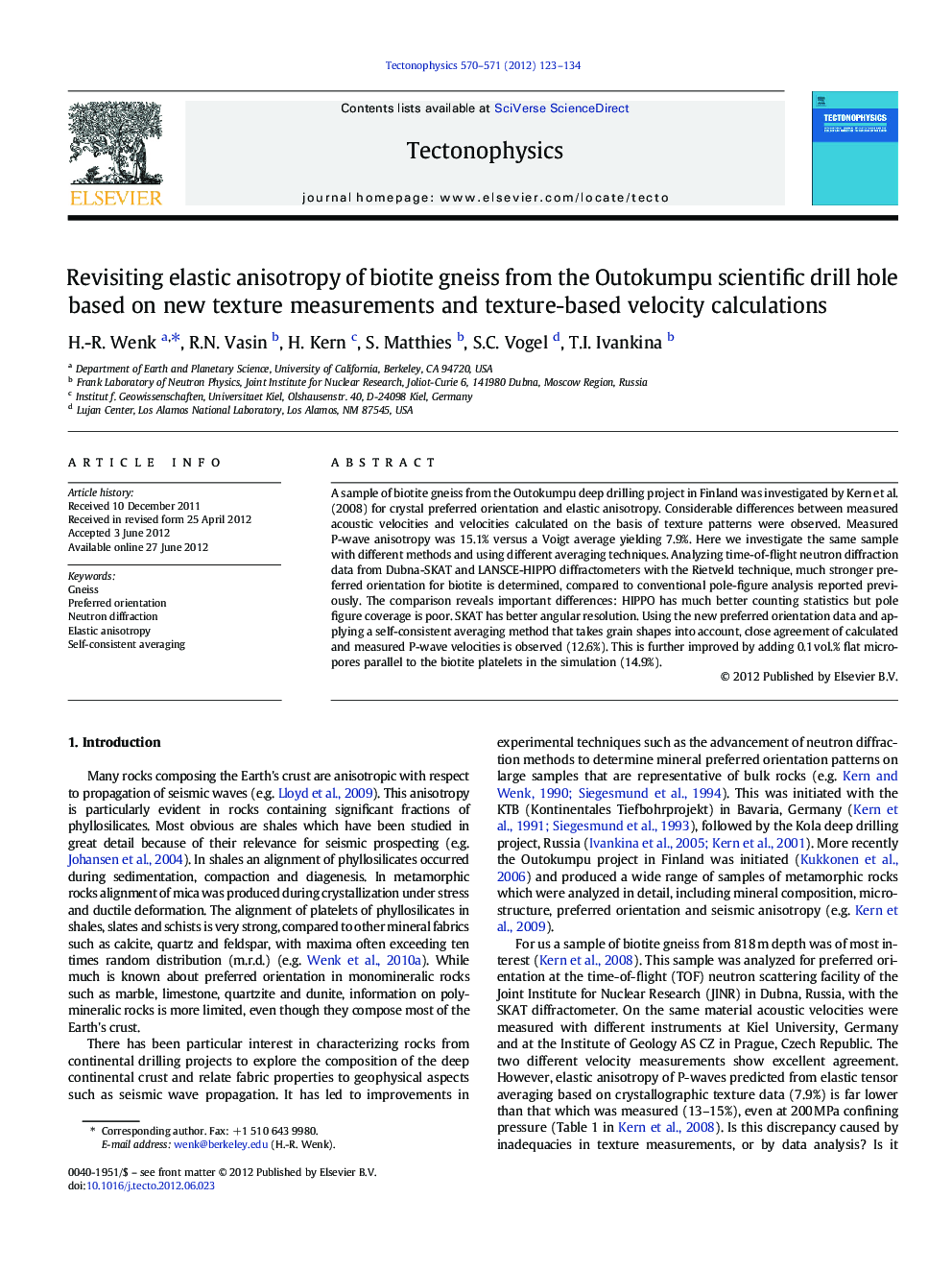| Article ID | Journal | Published Year | Pages | File Type |
|---|---|---|---|---|
| 6434209 | Tectonophysics | 2012 | 12 Pages |
A sample of biotite gneiss from the Outokumpu deep drilling project in Finland was investigated by Kern et al. (2008) for crystal preferred orientation and elastic anisotropy. Considerable differences between measured acoustic velocities and velocities calculated on the basis of texture patterns were observed. Measured P-wave anisotropy was 15.1% versus a Voigt average yielding 7.9%. Here we investigate the same sample with different methods and using different averaging techniques. Analyzing time-of-flight neutron diffraction data from Dubna-SKAT and LANSCE-HIPPO diffractometers with the Rietveld technique, much stronger preferred orientation for biotite is determined, compared to conventional pole-figure analysis reported previously. The comparison reveals important differences: HIPPO has much better counting statistics but pole figure coverage is poor. SKAT has better angular resolution. Using the new preferred orientation data and applying a self-consistent averaging method that takes grain shapes into account, close agreement of calculated and measured P-wave velocities is observed (12.6%). This is further improved by adding 0.1Â vol.% flat micropores parallel to the biotite platelets in the simulation (14.9%).
⺠Outokumpu gneiss is investigated with neutron diffraction and velocity measurements. ⺠New data suggest stronger preferred orientation for biotite than original report. ⺠Diffraction data analysis with Rietveld method provides reliable results. ⺠New data and self-consistent averaging produce agreement of model and experiment.
